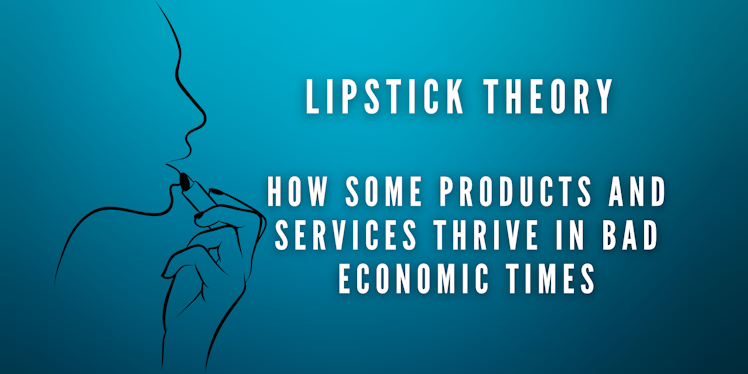Trending Assets
Top investors this month
Trending Assets
Top investors this month
What Investors Need to Know About the Lipstick Theory
Have you ever heard of the lipstick theory?
It's the idea that during tough economic times, sales of cosmetics, particularly lipstick, tend to rise. The theory suggests that in times of economic uncertainty, people tend to focus on small indulgences, such as a new tube of lipstick, to boost their mood and feel better about their appearance, even if they can't afford to splurge on larger luxuries.

But what does this theory mean for investors? Let's explore.
The lipstick effect is a real phenomenon. It's been observed during past economic downturns, such as the Great Recession of 2008, and is likely to occur again in future recessions (and the current[?]). For investors, this means that certain industries, such as cosmetics, could see increased sales during tough economic times while others may struggle.
The concept of the lipstick theory can be extended beyond the cosmetics industry to other sectors. It involves the transfer of higher-cost items to lower-cost alternatives due to economic conditions. For instance,people are opting to purchase used cars or repair their existing vehicles instead of buying new ones due to the decreasing disposable income. Similarly, instead of traveling to resorts for a week-long vacation, people are opting for domestic or weekend trips. In an economic downturn, individuals must prioritize and compromise their spending.
While some industries, such as gambling, alcohol, and sex toys, have seen an increase in sales during economic downturns, this theory does not apply to luxury goods. High-end products are more stable than mid-end and low-end products due to the wealth of their customer base. Customers who can afford to spend tens of thousands on luxury items do not compromise on quality, as they have a considerable amount of disposable income. In contrast, mid-end and low-end customers have less disposable income and are more sensitive to price changes.
Even high-end companies are affected during economic downturns. Mid-end customers who have ventured into the high-end market may revert back to the mid-end market once the economy stabilizes. Therefore, the impact of the lipstick theory varies across industries and customer segments.
The lipstick theory comes down to the positioning of the company and its strategy. Reverting back to the framework of Michael Porter and his Power model. See my article on the model. Two strategies he proposed for a company to pursue are low-cost provider and differentiation. We are seeing how these two strategies benefit two different kinds of companies, the low-end companies, as more will be prudent with their spending, and the high-end companies’ customer group is stable through an economic downturn.
Additionally, the lipstick effect may not be as pronounced in today's economy as it was in the past. With the rise of social media and the emphasis on personal branding, people may be more likely to invest in higher-end makeup products rather than just picking up a drugstore tube of lipstick.
So, what should investors keep in mind when considering the lipstick theory? Here are a few key takeaways:
- The lipstick theory refers to a phenomenon observed during economic downturns, where a decrease in disposable income alters spending behavior.
- The theory originated from the observation that lipstick sales tend to increase during bad economic times. The argument is that even when consumers can no longer afford their usual luxuries, they still desire a cheaper substitute to fulfill their luxury needs.
- High-end luxury items are less impacted by the lipstick effect since their customer base tends to be less affected by economic downturns.
- The lipstick theory is not exclusive to the cosmetics industry and can be applied to other sectors. For example, the sales of gambling, sex toys, and alcohol have increased during economic downturns.
In summary, the lipstick theory can provide investors with some insights into consumer behavior during economic downturns, but it should not be the only factor in investment decisions. Investors need to dig deeper and consider a variety of factors when evaluating potential investments.
investacus.substack.com
Porters kraftmodell - En modell för att hitta vallgravar
En modell för att identifiera skyddade positioner och bättre förstå ett företags position i värdekedjan
Already have an account?